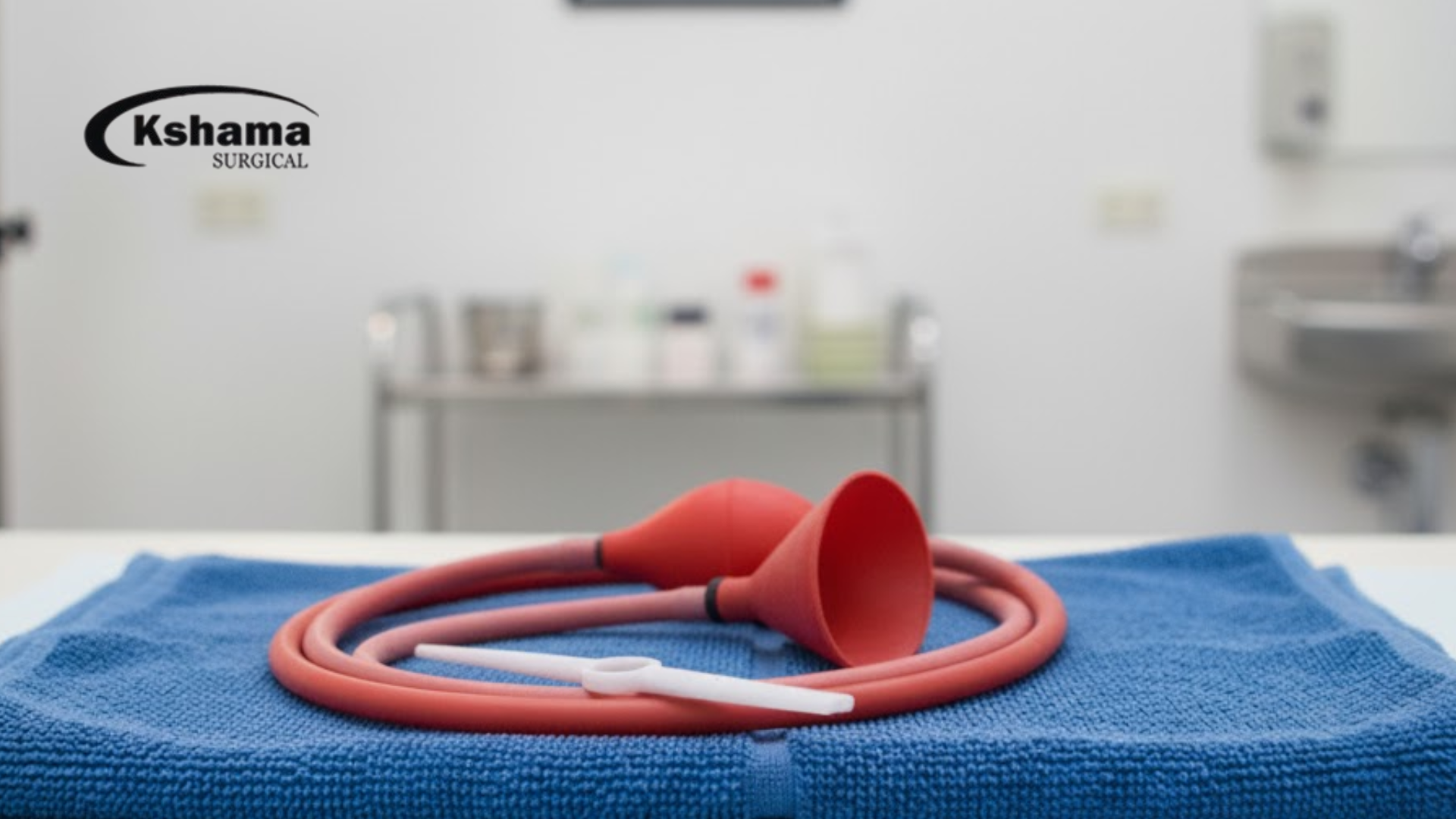Introduction
The thing is, sometimes the slightest things can save lives. Like a stomach tube. It looks like a simple, small soft pipe, but it is of significant value in hospitals and vet’s offices. Whether it’s feeding someone who can’t eat, or helping an animal in pain, this little tube quietly does its job every single day.
What Actually is a Stomach Tube?
A stomach tube is a long, soft flexible tube that can be placed from the mouth or nose, directly into the stomach. It is used for feeding, draining, and providing medication when a patient or animal cannot take food in the usual way.
Doctors and vets both use it. It belongs to those important Veterinary Surgical Instruments that help them handle tough cases safely.
It may not look special, but believe me, it’s one of those tools you only notice when it’s needed the most.
Why It’s So Important
Sometimes people or animals just can’t eat or drink normally — maybe after surgery, or because of sickness. That’s where the stomach tube steps in. It helps doctors give nutrition or medicine directly into the stomach.
In animals, vets use it for cows, dogs, or cats when they can’t eat or they swallowed something wrong. It’s honestly a lifesaver. I’ve seen a weak dog being fed through it, and within days, it looked so much better. So yeah, this small tube does a huge job.
Types of Stomach Tubes
You might think a stomach tube is just one type. But actually, there are a few kinds depending on what it’s used for.
Nasogastric Tube (NG Tube)
This one goes from the nose to the stomach. It’s used for feeding or draining when it’s just for a short time.
Orogastric Tube
Goes from the mouth instead of the nose. Mostly used for babies or animals.
Gastrostomy Tube (G-Tube)
This one is for long-term use, goes straight into the stomach from the abdomen.
Levin or Salem Sump Tubes
These are for more hospital-level work, like removing fluids or gas from the stomach safely.
So depending on what the patient or animal needs, the doctor picks the right kind of tube.
How Doctors and Vets Use It
For doctors, this tube is used for different things:
- Feeding patients who can’t swallow.
- Removing extra gas or fluids from the stomach.
- Giving medicine when swallowing is hard.
- Collecting stomach fluid for testing.
In animal care, vets use it to feed or remove toxins. Like for cows, it helps release gas if the animal has bloat. For pets, it helps give liquid food when they’re weak.
These are small things but can be the reason for saving a life. That’s why it’s part of the most used Veterinary Surgical Equipments.
How to Pick a Good One
Buying or choosing a stomach tube might sound simple, but there are few things you gotta check:
- Material: It should be soft, flexible, and safe for the body.
- Size: There are different patients of all different sizes.
- Sterility: Always verify that it is clean and sterile.
- Quality: Buy reputable brands that produce durable Veterinary Surgical Instruments.
- Comfort: It should easily bend and not break or hurt when bent.
Cheap-appearing instruments may look fine but can injure animals if they crack or get stiff. It’s always better to buy quality.
Cleaning and Maintenance
Okay, this part is super important. Keeping the stomach tube clean is everything.
After every use, it should be washed and sterilized properly. Never reuse it without cleaning. Always store it dry and clean. If it gets cracks or hard spots, replace it immediately.
Because one small mistake with hygiene can cause infection. Especially in hospitals and animal clinics, hygiene can’t be ignored at all.
Common Problems and How to Avoid Them
Even though the stomach tube is very useful, sometimes small problems can happen if not handled properly. The most common issues are:
- Tube blockage: This happens when food or medicine clogs the tube. Flushing it with warm water after each use can help prevent that.
- Infection: If the tube or hands aren’t clean, infection can spread. Always use clean gloves and sterilized tools.
- Discomfort: Sometimes patients or animals feel uneasy when it’s first inserted. Using the right size and being gentle helps a lot.
Doctors and nurses are trained for this, and so are vets. The trick is simple — care and attention. The better it’s handled, the longer and safer it works.
And when you buy from trusted suppliers of Veterinary Surgical Equipments, you reduce the risk of poor-quality tubes that cause issues. So, it’s not just about using it, it’s also about choosing wisely.
FAQs
What is a stomach tube for?
It is used for feeding, administering medications, or removing material from the stomach in instances, where normal feeding would be impossible.
Is it also used in animals?
Yes! Using one of many Veterinary Surgical Instruments safely utilized by a veterinarian for feeding or treating sick animals.
Is it reusable or single-use?
Some detachable feeding tubes can be reused if made from durable materials and are properly sterilized. However, many hospitals prefer using single-use ones for safety.
How is it inserted?
Doctors or vets carefully insert it through the nose or mouth into the stomach. It sounds scary but it’s not painful when done right.
Is it safe to use?
Yes, it’s very safe when handled by trained professionals. Just make sure it’s clean and done with care.
How long can it stay in?
Short-term tubes like NG ones can stay a few days. Long-term ones like G-tubes can stay months with good cleaning and care.
conclusion
So yes, the stomach tube doesn’t seem fancy or high-tech; it is one of the most dependable implements the doctor and vet will use every single day. It will assist with feeding, provide cleaning support, and help heal those who cannot help themselves.
The simple tube is silently supporting so many human and animal lives in all types of clinical and hospital settings. We forget that some of the smallest instruments can provide us with amazing miracles.




